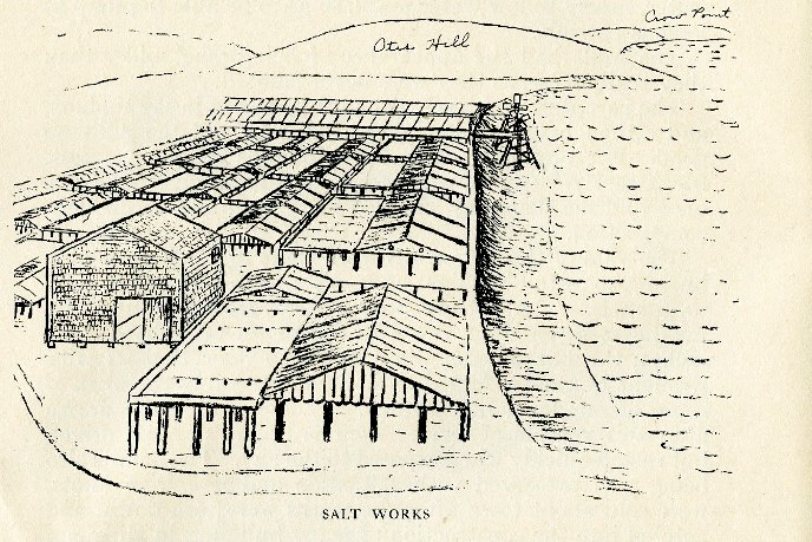|
|
Upon discovering that salting codfish preserved it better when air drying, the salt trade became linked with the cod trade. A fisherman, writing home said:
“I thought that you might like to hear from me that we have 33,000 fish...18 barrels of oil 12 barrels of bait and 45 Thds of salt” -Hanson, The Life and Letters of Solon J. Hanson [Solon, 1857] To the left is a layout of an old, coastal, salt works in Cape Cod. |
|
Along with dietary uses, it was also used as one of the primary meat substitutes on holy days.
The fisherman also mentions 18 barrels of oil which he has along with his catch and salt. Medicinally, Norse fisherman rubbed codfish liver oil on their sore muscles to ease the pain. By the 1700s, healers had observed the medicinal potential of the oil and began prescribing it to their patients. “A woman, who labored under the most excruciating rheumatism, and was an outpatient of the infirmary, being advised to rub her joints with the oil was induced to take it, at the same time, internally. A few weeks restored her to the use of her limbs, and she was cured.” -Robert Darbey, 1782 |
|
The cod trade was connected to the salt trade. Both were far reaching commodities, that promoted even more international economic exchange. Cod liver oil was essential as cure for many real ailments and a fuel for light, necessary in a time without electricity.


